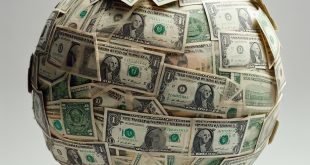Jerome Powell’s predecessors Ben Bernanke, Alan Greenspan, and Paul Volcker were first appointed by a president from one party, then reappointed by a president from the other, similarly Powell himself was first nominated to the Fed’s board of governors by President Barak Obama, he was elevated to Federal Open Market Committee chair by President Donald Trump and renominated by President Joe Biden.
So, it seems that tracing the political element will not help while considering the current US inflation dilemma. There is debate about what the Fed should be doing. Should the central bank tighten policy to rein in inflation, or hold back to allow for a faster recovery?
Very few market participants and observers doubt that it is the Fed’s job to make the choice, and that once they do, they can carry it out. Taking a step back, one could ask if the Fed is really all-powerful. All US citizens would like to see inflation come down; and of course, all would like to see stronger labour markets. But can the Fed give the US economy and the American dollar what they want?
During the so-called Great Moderation, it was easy to have faith in the Fed. In the U.S., as in most rich countries, governments had largely turned over the job of macroeconomic management to independent central banks, and were enjoying an era of stable growth with low inflation. Magazine covers could, without irony, feature the Fed chair in papal regalia as “Alan Greenspan and His College of Cardinals,” or (when the waters got choppier) the central figure in the “committee to save the world.”
Respectable opinion of the 1990s and 2000s was captured in a speech by Christina Romer, soon to be Obama’s chief economist, declaring that “the Federal Reserve is directly responsible for the low inflation and the virtual disappearance of the business cycle in the last 25 year. The story of stabilization policy of the last quarter century is one of amazing success.” Romer delivered those words in late 2007. At almost exactly that moment, the U.S. was entering its then-deepest recession since World War II.
The housing bubble and financial crisis raised some doubts about whether that success had been so amazing after all. The subsequent decade of slow growth and high unemployment, in the face of a fed-funds rate of zero and multiple rounds of quantitative easing, should have raised more. Evidently the old medicine was no longer working. Perhaps it never worked as well as we thought.
One is that, as Milton Friedman famously observed, monetary policy acts with long and variable lags. A common estimate is that the peak impact of monetary policy changes comes 18 to 24 months later, which is cripplingly slow for managing business cycles. The last episode of rising prices in the US came in the summer of 2008, when inflation reached 5.5 percent. A year later, unemployment was in double digits and the US was experiencing deflation. When the main effects of today’s tightening are felt two years from now, how confident are we that inflation will still be our big concern?
More fundamentally, there’s the question of what links monetary policy to inflation in the first place. Prices are, after all, set by private businesses; if they think it makes sense to raise prices, the Fed has no mind-control ray to convince them otherwise.
In the textbook story, changes in the Federal funds rate are passed through to other interest rates. A higher cost of borrowing discourages investment spending, reducing demand, employment, and wages, which in turn puts downward pressure on prices. This was always a bit roundabout; today, it’s not clear that critical links in the chain function at all.
Business investment is financed with long-term debt; the average maturity of a corporate bond is about 13 years. But long rates don’t seem particularly responsive to the federal-funds rate. Between fall 2015 and spring 2019, for example, the Fed raised its policy rate by 2.5 points. Over this same period, the 10-year Treasury rate was essentially unchanged, and corporate bond yields actually fell. Earlier episodes show a similar nonresponse of long rates to Fed actions.
Nor is it obvious that business investment is particularly sensitive to interest rates, even long ones. One recent survey of the literature by Fed economists finds that hurdle rates for new investment provide no apparent relation to market interest rates.
Bernanke puzzled over the black box of monetary policy transmission before becoming Fed chair. If it does not move interest rates on the long-term debt that businesses mostly issue, and if even longer rates have no detectable effect on investment, how exactly is monetary policy affecting demand and inflation? It was a good question, to which no one has offered a very good answer.
To be sure, no one would claim that the Fed is powerless. Raise rates enough, and borrowers unable to roll over their loans will face default; as asset values fall and balance sheets weaken, households will have no choice but to drastically curtail consumption.
But being able to sink a ship is not the same as being able to steer it. The fact that the Fed can, if it tries hard enough, trigger a recession, does not mean that it can maintain steady growth.
Some observers believe that it is time to admit that there are no central banking “maestros” who know the secret of maintaining full employment and price stability. Balancing these critical social objectives requires a variety of tools, not just a single interest rate. And it is, for better or worse, the responsibility of our elected government.

 Noor Trends News, Technical Analysis, Educational Tools and Recommendations
Noor Trends News, Technical Analysis, Educational Tools and Recommendations




